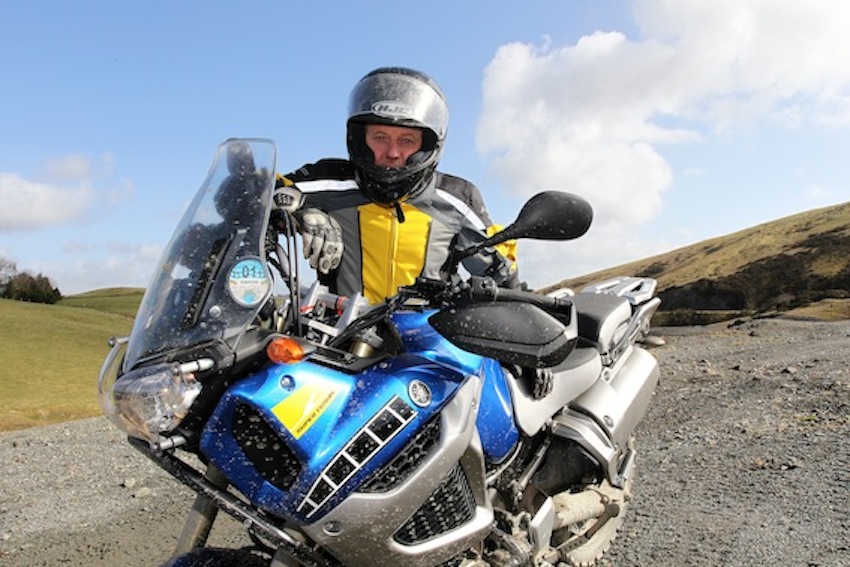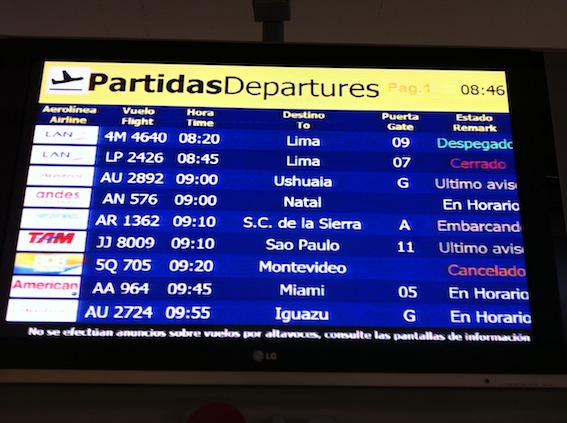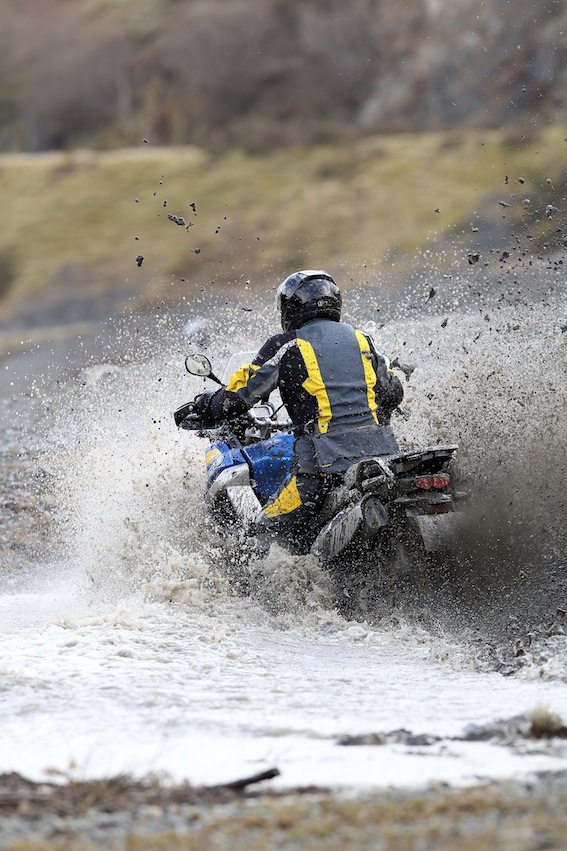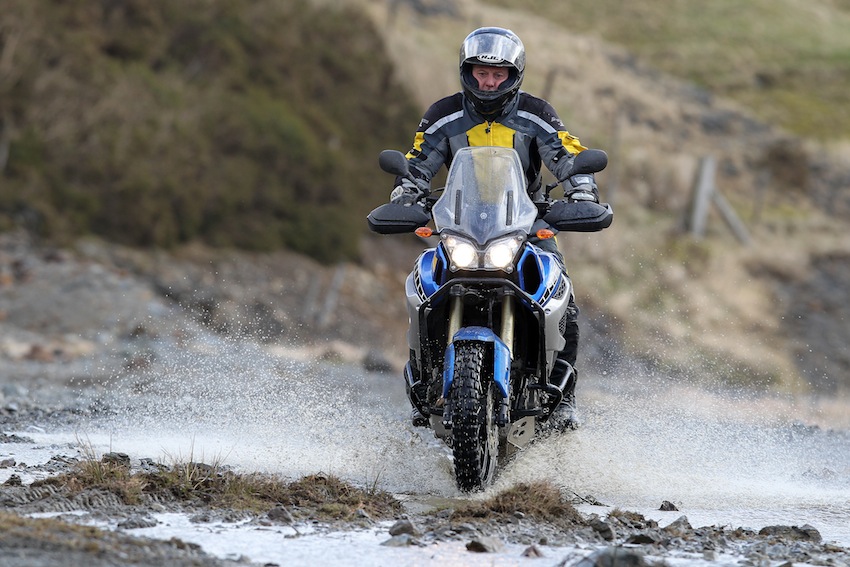
Nick Sanders is currently in the middle of a world record attempt, trying to set the fastest trip from Alaska to Tierra del Fuego aboard a Yamaha Super Tenere XT1200Z wearing a Touratech Companero riding suit. Here is the latest blog entry from Nick as he flies across the Atlantic to South America:
It read 10,093 kilometres to fly and an estimated 11 hours and 55 minutes time in which to cover this distance. The map on the television monitor aboard Aerolineas Argentinas 747-400 told us all the information we needed to know. The flight from Gatwick to Madrid had been uneventful and we hoped the long leg to Buenos Aires would be smooth and quick. I disliked flying and even though the range of the plane was 3500 kms more than the distance we were to travel, a headwind would cut that down by half. If I was truthful, I would happily stay at home, give maps to my fellow heroes and let them get on with it and while it is sometimes difficult to say what a journey is, the solo nature of this voyage is not what this adventure is about.
We are airborne, the heavily laden wide-bodied plane heaves up off the ground, wings the width of a football pitch flexing with the strain. The moon is full, illuminating the port wing, little eyebrows looking puzzled over the Sea of Tranquillity, the contrast ratio of reflection and dark so great it is the only thing you can see, when suddenly, a voice pings over the intercom introducing itself as the captain. Signor Ronaldo Banana wishes us a pleasant voyage as we rushed across this now black void that was minus 17 degrees centigrade.

Squished in between our medic, Dr Taylor and a round-faced boy who looked like an Indian, I could smell the dinner trolley getting closer. It is a limiting experience being on an aeroplane in the sense that it takes you to a place you do not need to go. Neither do you feel the pain of the cold nor have any real idea where you are supposed to go. If there were fires on the ground you would not smell the smoke, but as you climb to a point where you are unimaginably high, you can stretch your legs a bit and hear the rattle of trays containing your meal.
The riders have signed up for an adventure which might change the way they think about their lives, or not, but right now the only decision to make is whether to have chicken or the beef. A glass of red maybe or perhaps a drier Pinot Grigio with the white meat. It was something to do on this long dark flight.
Dr Taylor is reading a book about the Andes and tells me about the Mapuche Indians and how 100 000 of them live in Bariloche, a place we will soon ride through on the west of Argentina. The poets there strive to assert their Mapuche identity where the last symbol of the Araucanians is the now suburbanized monkey-puzzle tree, the pine nut of which was the staple nourishment of these people. The Mapuche get drunk a lot and claim it’s their route to enlightenment, not unlike this Pinot grape that tries hard to wash away the dryness of the unmemorable food.

On the flight the honourable doctor continued to feed me facts about the world we were soon to inhabit. Did I know that when Darwin sailed for five years with the captain of HMS Beagle, Captain Fitzroy, a deeply religious man prone to depression, the captain slit his own throat with a razor and bled to death in his cabin. Suicide is not my fear and not something I worry about on behalf of my riders, more like they will experience such a blast of life between the start and Alaska that they won’t know how to contain such a stiff breeze.
For some, motorcycling 24 000 miles in around nine weeks, riding the length of the mighty Americas across the windy south and her mountains and deserts and tropics is in some way analogous to climbing a mountain – scaling the peak of one’s life – the solo journey in a person’s head – those frantic yet funny thoughts which so confusedly search for an answer that is all but impossible to find. On the other side of the Andes, not so far from where we will finally disembark, there is a mountain called Cerro Torre, a needle-shaped pinnacle of rock of crystalline igneous diorite thought to be unclimbable because of winds reaching 150 mph. The Italian Cesar Maestri claimed a successful attempt to it’s summit in 1959 but lost all proof when his companion, Toni Egger, fell to his death carrying the only camera. In 1970 Maestri attempted it again but this time armed with a drill to secure better footholds. This remarkable feat became the subject of a film, Scream of Stone (1991), an examination of this ascent, by the director Werner Herzog, dramatising the role of traditional climbers and the new mountaineers.
A motorcycle journey is perhaps not as dramatic as something which forces you to hang on to rock by your fingertips, but the dangers of death on the open road are equally everywhere to see.
